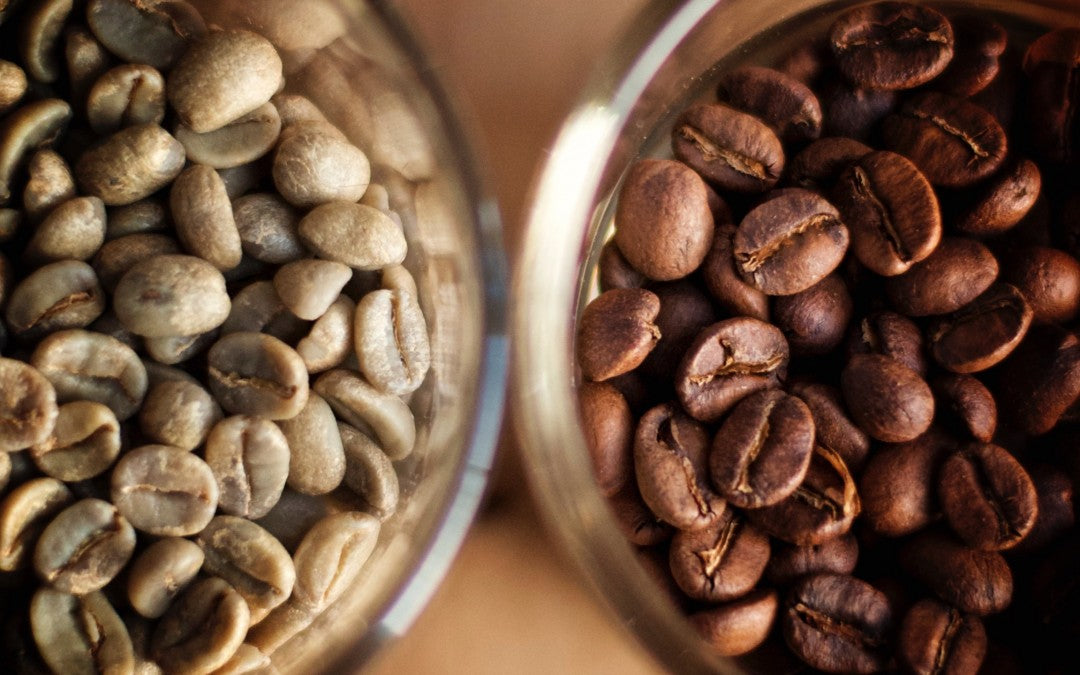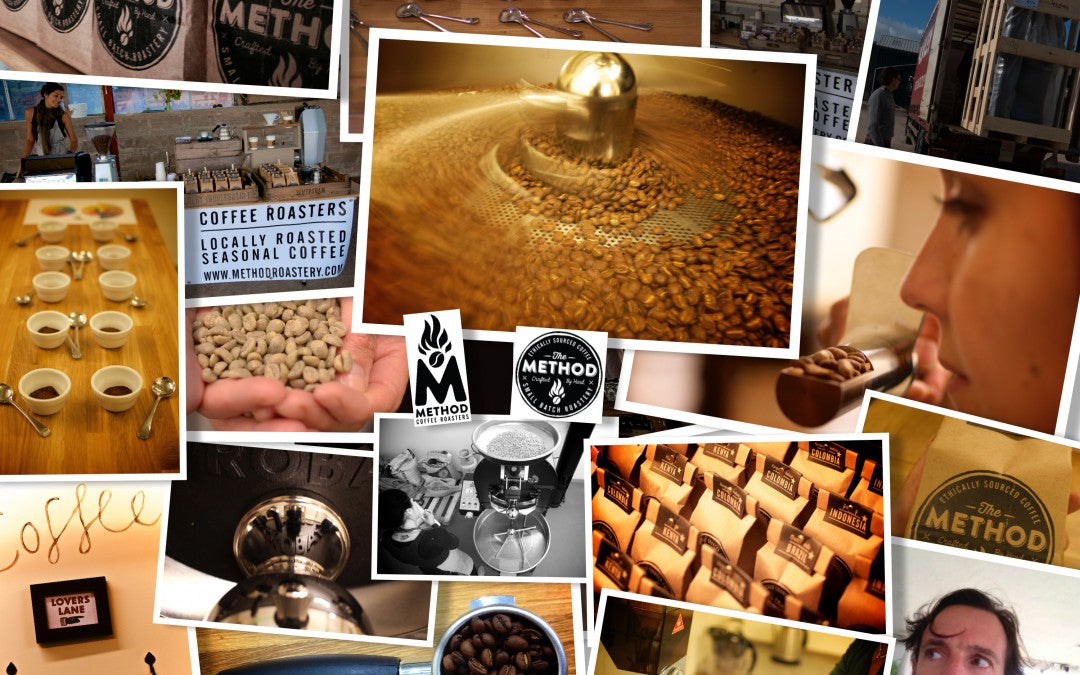Method roastery … roasting coffee with love
Meeting people and ‘talking coffee’ is always great fun, and one of the things we love about taking our products to sell at farmers markets and food festivals is the chance to connect with people and have great coffee chats. Very often when we meet coffee drinkers who are trying or buying our coffee the conversation leads to the question of “how do you roast coffee”? As you can imagine there is a short answer, a not-so-short answer, and a pretty damn long answer! Well, for those of you who have a little time on your hands, here’s the medium-length answer …
Let’s get one thing out there straight away – we love roasting coffee! We love the smell, we love the science, and we love the craft of teasing out the flavours that are locked in those beautiful green beans. By treating each coffee with respect and care we always strive to showcase a particular bean’s flavour characteristics. These flavours will be influenced by a whole range of factors including the coffee’s terroir, variety, and how it was processed … we could wax lyrical about such things over a coffee any day of the week! While all of these factors (and more besides) influence the character of our cherished cup, this post is about roasting coffee, and how that influences flavour.
Roasting on a traditional drum-roaster
We use a Probat coffee roaster. Probat have been manufacturing roasters since the nineteenth century, and in many ways the design of the roaster hasn’t changed that much: essentially a metal drum rotates above a flame, moving the coffee beans constantly during the process to ensure even roasting. We control the heat being applied to the drum by making manual adjustments to the gas flame during each roast. We take great care throughout the roast, observe and record the temperature and time, and check the beans’ development.
While the design of the roaster is old-fashioned, as you might imagine there have been some technical tweaks: the roaster is fitted with temperature probes and links up to data-logging software, this technology helps us record each roast accurately and replicate a recipe or ‘roast profile‘ when we are completely satisfied with the results. Our Probat is a little 5KG roaster, which means we’re roasting in small batches, so it’s easy for us to experiment with different roast profiles until we’re 100% satisfied with the results for a given coffee.
That is one sweet cup of coffee …
Around 10% of a green coffee bean is made up of simple sugars which react at roasting temperatures. After all the water contained in the green coffee has evaporated some of the sugars caramelize and others react with proteins in maillard reactions that cause the colour change in the coffee and develop roast-flavour traits and complexity. The coffee beans will also double in size and develop over 800 aroma compounds, they will pop loudly as they release pressurised gases and water vapour – a reaction referred to as ‘first crack’.
Light roast or dark roast?
Often when we describe coffee we talk about the final colour of the coffee bean and how light or dark it is. During roasting, coffee beans go from green to yellow, to light brown, to brown … to black if you let them – although we don’t ever want to roast our beans until they go oily and black! That said, describing coffee as a dark roast or a light roast doesn’t tell the whole story; the speed that the coffee is roasted also influences the flavour – you can get to a given colour slowly or quickly.
Large-scale commercial roasting of coffee can be done in less than 2 minutes. Slow roasting takes between 14 to 20 minutes. You won’t be surprised to learn that we roast slowly and carefully, this achieves a much better tasting cup of coffee. Of course the length of the roast is only part of what affects the flavour; during the roasting process we are taking care to control acidity, sweetness and bitterness, and this is done by understanding the different chemical reactions that take place at different times of the roast. By carefully controling the intensity of the heat at different stages of the roast we will influence the development of these different flavours.
Lighter roasted coffees bring out more acidic or fruity flavours and some of the natural sugars in the coffee bean. Lighter roasted coffee has less body in the cup, and in general coffees roasted this way are suited to slower brewing methods. The longer extraction draws out plenty of sugars, and the lighter roast allows the subtle flavours of the coffee to really shine. This type of roast and extraction can deliver a delicous cup of coffee with great complexity.
Darker roasted coffees bring out more of the flavours of the roast with the caramelizing sugars playing a more prominant role. We never roast too dark, preferring to adopt a medium roast which allows the character of the coffee to come through, spice and sweetness balance the natural acidity and are complemented by more developed sugars, bigger body and sweetness, and subtle roasty flavours.
Coffee is so cool...
At the final stage of a roast, once we have reached the desired temperature and are satisfied that the beans have developed in the way that we want them to, we need to get the coffee out of the roasting drum and cool it as quickly as possible – this is to prevent baked flavours developing. The beans are released from the drum and into the cooling tray – cool air is quickly drawn through the beans and rotating paddles move the coffee around the tray. Now it’s time to pack the coffee and get it straight to you, the patient reader, so that you can have freshly roasted coffee in time for our next journal entry!





Leave a comment
This site is protected by hCaptcha and the hCaptcha Privacy Policy and Terms of Service apply.